The 21 Best National Parks in Arizona you won’t want to miss!
Arizona National Parks – The Best National Parks and Monuments in Arizona
Heading to the Arizona National Parks? This list is the 21 Best National Parks in Arizona.
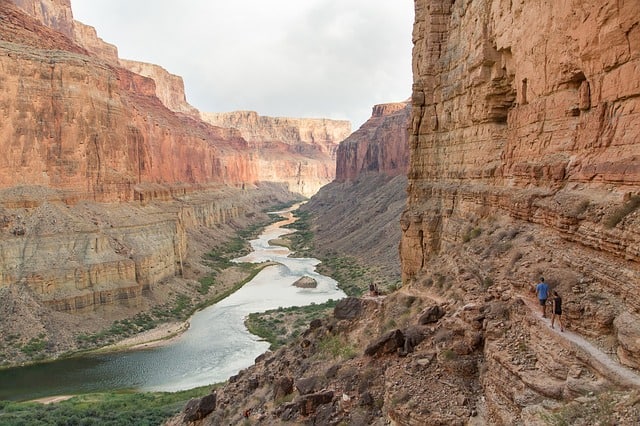
The Grand Canyon State has a lot to offer in natural beautiful scenery and amazing sites.
Technically, Arizona has 3 National Park and 18 National Monuments. This is a list of all 21! Everyone has heard of the Grand Canyon but there are so many more cool National Parks and National Monuments in Arizona.
National Parks in Arizona
1. Grand Canyon National Park Arizona
If you are looking for the best national park in Arizona – look no further! The Grand Canyon is an iconic landmark not just in America, but around the world.
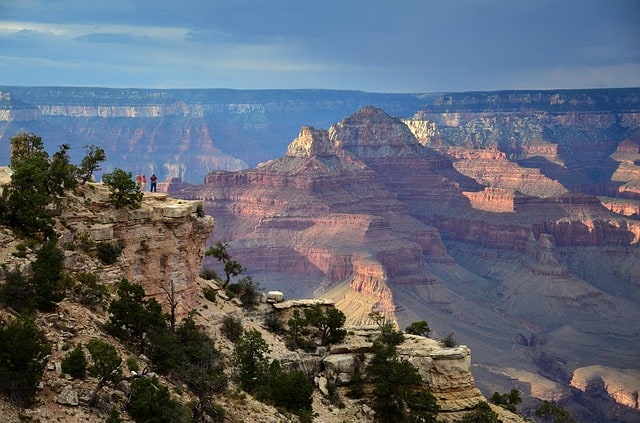
The natural wonder continues to stun millions of visitors a year merely with its size as well as its beauty. Many of the roaring canyons located within the park date back over 500 million years.
These beautiful ancient rocks can be viewed from many of the lookout spots within the park. This offers visitors an intimate look into the geological history as well as a close look at the beautiful natural wonder.
On average, the Grand Canyon receives over 6 million visitors a year, making it the 3rd most visited national park in the United States; following Olympic National Park and Great Smokey Mountains National Park.
The Grand Canyon officially became a national park in 1919 after almost 30 years of being a well-known landmark in America. The Grand Canyon has many stunning viewpoints, hikes, and other activities to make your visit worthwhile. The national park continues to be one of the most famous natural formations around the world.
Check out these Amazing South Rim Grand Canyon Viewpoints
The Grand Canyon is located in north-west Arizona, 214-miles west of Flagstaff.
2. Petrified Forest National Parks AZ
Petrified Forest National Park comprises of over 100,000 acres of fossilized wood and fallen trees. On first glance, the national park might not seem too appealing to many travelling visitors.
Although, upon closer look, the park does offer unique beauty with a range of unexpected bright colors appearing through the fallen trees and scenery of the park.

The national park also contains sections of the Painted Desert, making it not only more appealing but adds to the beauty of the national park.
The Petrified Forest National Park contains many viewpoints overlooking the colored landscape as well as some short hikes through the ruins and cliff edges.
Due to the multicolor through the park, Petrified Forest National Park is a great place to watch both the sunrise and sunset.
The colors from the park and the rising or setting of the sun bounce off one another creating a gorgeous and unmissable experience. There is a 27-mile long road travelling through the national park, making it possible for visitors to experience the beauty of the park without having to leave their car.
Petrified Forest National Park is located in the Navajo and Apache counties in north-eastern Arizona.
3. Saguaro National Park
The national park is primarily known for its preservation of landscapes, including the Saguaro cactus.
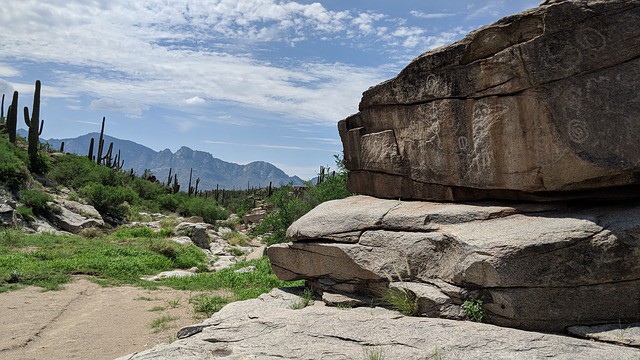
The Saguaro cactus is not only the state symbol of Arizona but also happens to be the largest and slowest growing species of cacti.
The Saguaro cactus can grow up to 15-metres high and live for many centuries. Due to the specific conditions that the Saguaro needs to grow and survive, the Saguaro National Park is one of only a few places where this species can naturally grow themselves.
It is a must-visit if you wish to see the state icon, Saguaro cactus in its natural habitat.
Saguaro National Park was previously a national monument until 1994 when it was promoted to being a national park. the park not only serves to preserve the Saguaro cactus but also is responsible for preserving other species of cacti, desert plants and many nocturnal wildlife in the area.
The Saguaro National Park is 92,000 acres and consists of two sections, Tucson Mountain District (located 10-miles west of Tucson) and Rincon Mountain District (located 10-miles east of Tucson).
National Monuments in AZ
4. Canyon De Chelly National Monument
The Canyon de Chelly National Monument consists of over 83,000 acres of land including three major canyons: de Chelly, del Meurto, and Monument.
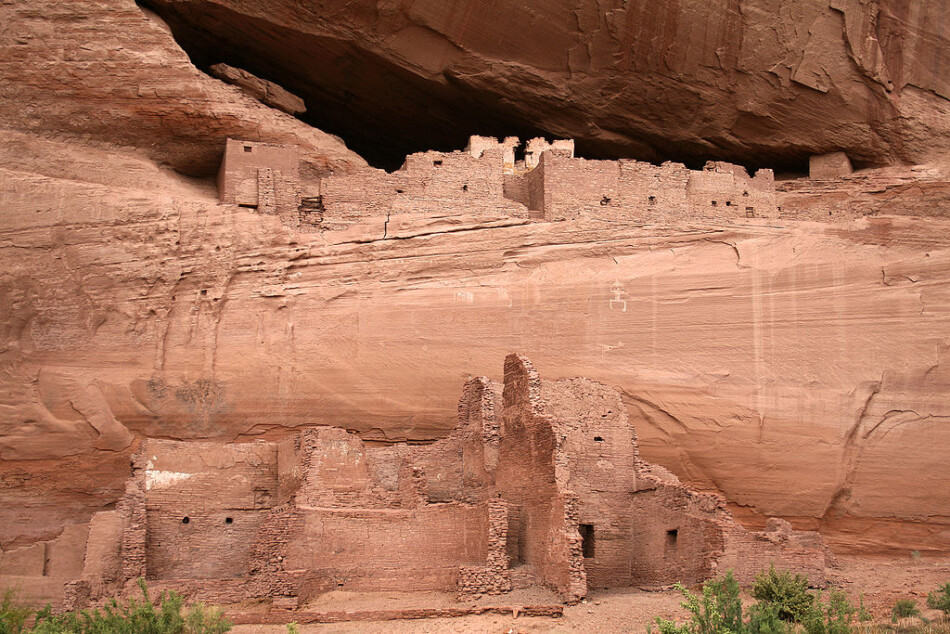
Andreas F. Borchert
The cliff walls of the canyons were cut millions of years ago through streams of water flowing through the canyons. These natural water sources have provided water for plants, wildlife and families for centuries.
The Native American Puebloans found these ruins to be the ideal location to grow their crops and raise their children. They built huts and homes for their tribes and families until the mid-1300 when they relocated out of the canyons to find more suitable homes for their growing crops.
In 1931, Canyon de Chelly was officially named a National Monument in an effort to preserve the importance of the land and the archaeological history that includes over 4,000 years of civilization and occupation.
Due to the long history, the beautiful viewpoints over the empty scrub filled valleys, the many wonderful hiking trails and the ability to camp overnight; Canyon de Chelly National Monument remains to be on the most visited National Monuments in America.
Canyon De Chelly National Monument is located 2-miles east of Chinle in Apache County, Arizona.
5. Organ Pipe Cactus National Monument
This national monument is famous for the organ pipe cactus. The organ pipe cactus is traditionally native to Mexico.

However due to the close proximity of the national monument to the border of Mexico, the Organ Pipe Cactus National Monument is the only place in the United States where these cacti grow naturally and wildly.
The national monument not only contains the organ pipe cactus but many other species of cacti, as well as other plant species and wildlife which are now all protected by the monument. In 1977, the monument was also named as being a UNESCO biosphere reserve, a programme in which UNESCO works to improve the relationship between people and the environment.
There are many hiking trails in the monument, some official and some unofficial. It is recommended to stay on the officially maintained trails due to the unsafe conditions of wondering free among the land. There are also two permitted camping sites at the monument which are located on slight slopes and provide views throughout the vast scenery of the monument.
Organ Pipe Cactus National Monument is located south-west of Arizona in Pima County, along the border to Mexico.
6. Chiricahua National Monument
A quiet and secluded area in southern Arizona, the Chiricahua National Monument is one of the fewer visited national monuments. This is due to the remote location and the fact that it is somewhat difficult to get there.
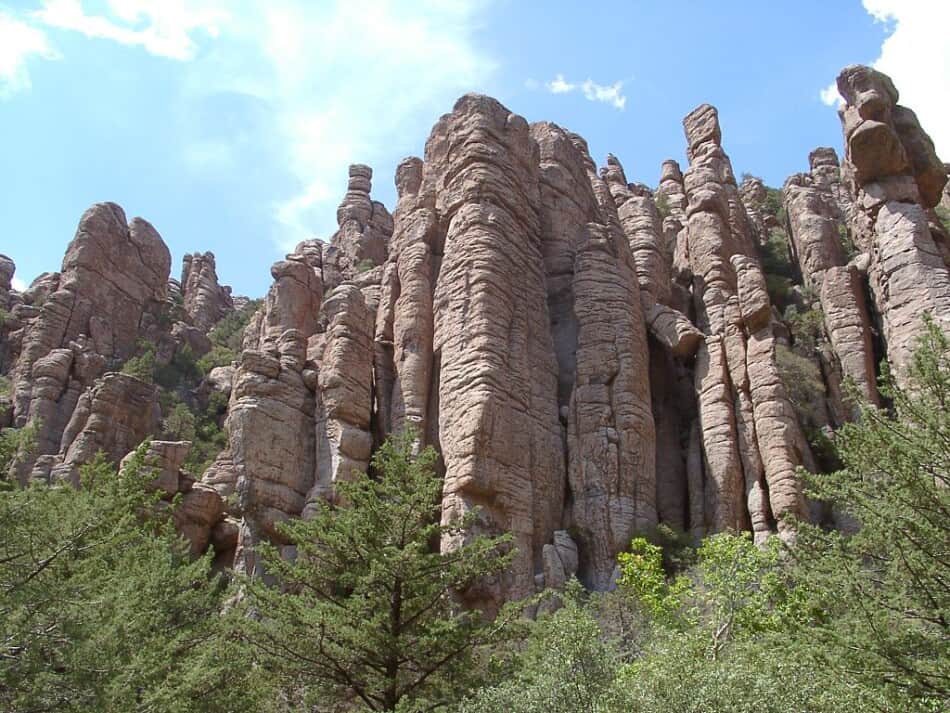
The national monument is within the Chiricahua Mountain Range and contains volcanic rocks, unusual plant species, unique wildlife, scenic drives and paved hiking trails.
The national monument is sometimes referred to as the ‘wonderland of rocks’ due to the mass amounts of volcanic rocks in the area that naturally formed into beautiful standing pinnacles. These very pinnacles and rocks are the reason in which this place got named a national monument, in an effort to protect and preserve them.
There is an 8-mile scenic driving route through the national monument that takes visitors from the entrance, past the visitor’s center and through past the viewpoints in which you sit at a 6,000-ft elevation overlooking the pinnacles, wildlife, plant species and rare cacti in the area.
At the end of the scenic drive is where many of the semi-difficult hiking trails begin. These trails take visitors down into the canyons providing an up-close personal experience with the volcanic rocks turned pinnacles.
Due to the unique climate in the area, many unique plant species and wildlife are found in the area. Many are native to Mexico, and Chiricahua Mountain Ranges are often the only places in America where these species can be found.
Chiricahua National Monument is located in south-east Arizona, Cochise County.
7. Vermillion Cliffs National Monument
Vermillion Cliffs National Monument was established in 2000 and remains to be on the most visited national monuments established that year.
The national monument only contains a few signs indicating its location and is without a visitor center. Thus, leaving tourists and visitors to explore the national monument for themselves.
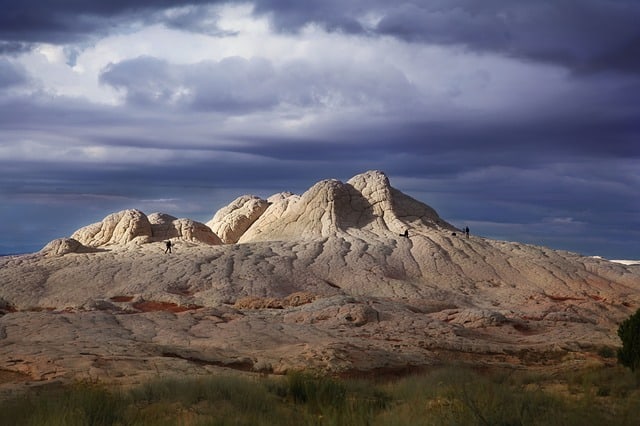
The National Monument has gained in popularity over the recent years and tourists now flock to the area to gain a chance to see the Coyote Butte.
The Coyote Butte, located in the north-western end of the monument contains the well-known tourist attractions known as The Wave, Buckskin Gulch, and Paria Canyon. These three landmarks of the monument show vibrant colors and soaring cliffs.
The area appears to have gained so much popularity that special permits are required to enter the Coyote Butte, and hundreds of people compete daily to gain these special permits.
Other tourist attractions located within the monument are Jacob’s pool and Rachel’s pool, small spring pools at the south of the Vermillion Cliffs. There are also a few hiking trails in the area, allowing visitors to explore the beauty of the monuments.
The Vermillion Cliff National Monument is located in far north Arizona, in Coconino County just south of the Utah border.
8. Walnut Canyon National Monument
The Walnut Canyon contains walnut creek, a 600-ft deep canyon that flows to the east. This canyon joins onto the Colorado River which eventually flows through the Grand Canyon.

The floors of the canyon contain vast amounts of walnut trees, in which the canyon is named after. The interior walls of the canyons are also home to many plant species, including cacti and pine trees.
The national monument is easily accessible and includes a good visitor center as well as a small museum which sits on the edge of the cliff with an amazing panoramic view of the canyons.
The easy accessibility, the great beauty, and the facilities make for Walnut Canyon National Monument a very popular tourist destination in Arizona.
Although there are no campsites located in the area, the nearest city, Flagstaff is located just 10-miles north-west ensuring great accommodation if wishing to properly explore this magnificent national monument.
9. Wupatki National Monument
The Wupatki National Monument is one of the best preserved and protected Puebloan villages of an ancient civilization.
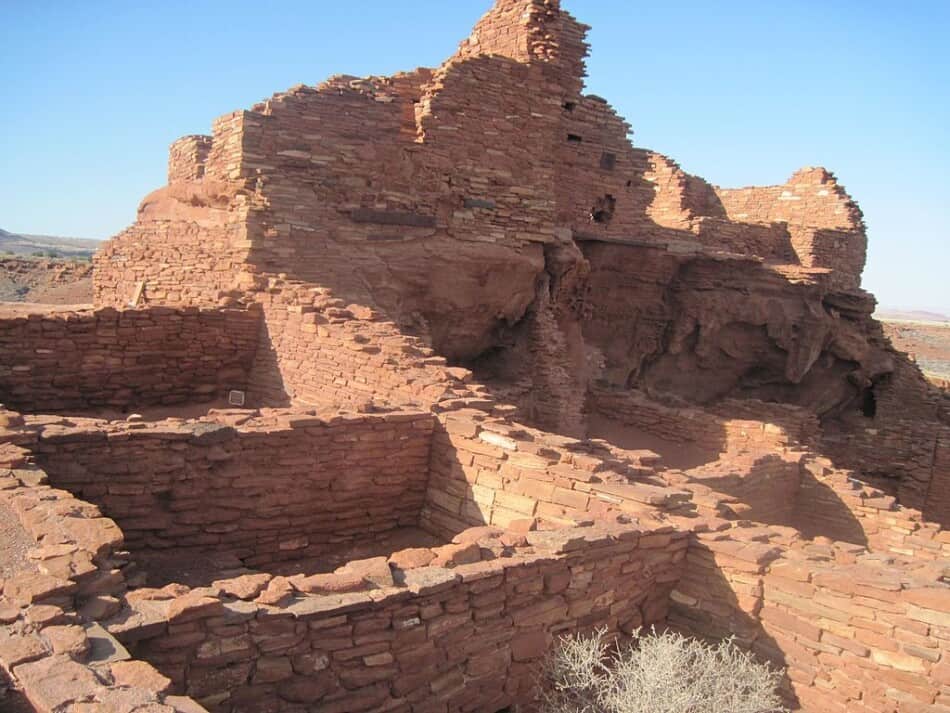
What makes Wupatki stand out is the mere amount of villages here, while others only have one or two buildings, Wupatki has over 800 ruins scattered across the land.
Five of the largest ones are right off the main road. This makes it easy for visitors to experience the rich history of these monuments without having to travel to far in. Wupatki National Monument was established in 1924 to protect the ruins scattered around 35,000 acres.
This national monument is located 30-miles east of Flagstaff.
10. Sonoran Desert National Monument
Unlike other national parks and monuments, Sonoran Desert National Monument does not feature an attraction nor is it designed to appeal to visitors.
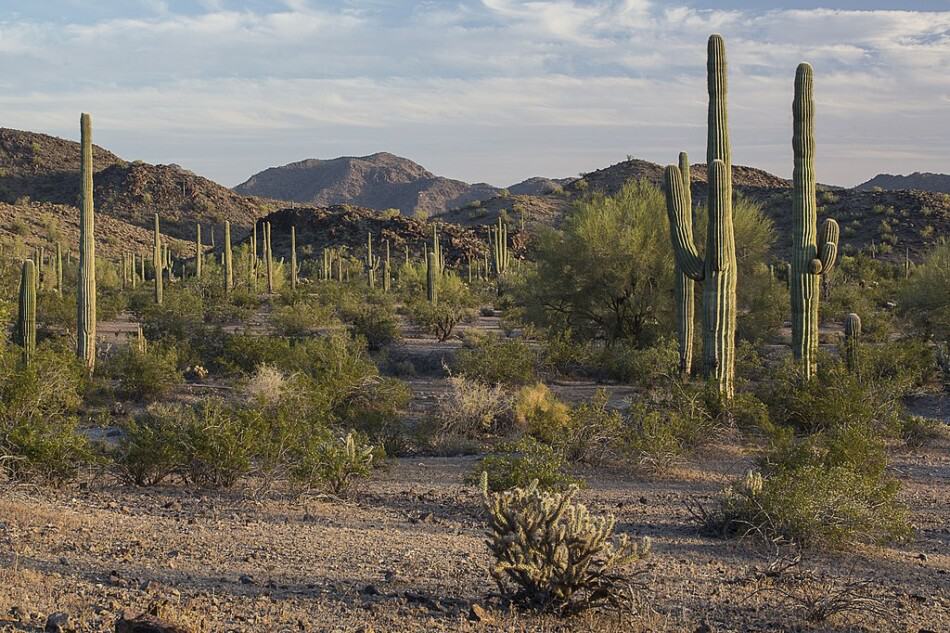
The core purpose of the Sonoran Desert National Monument is to protect and preserve the history of the desert. This history includes the Indian relics, native habitats, wildlife and plant species.
Although, the monument is open to visitors to explore the natural and untouched beauty. There are roads located within the monument, allowing visitors to drive through.
One popular mode of transport through the monument is via horseback riding. This is permitted anywhere in the monument, although, is most common through the four marked trails spanning across 26-miles in its entirety.
Due to the remote location of the monument and the lack of any center, cell towers or available water; it is essential that anyone who wishes to visit the monument, come prepared with everything they may need.
The Sonoran Desert National Monument is located 55-miles south-west of Phoenix, Arizona.
11. Agua Fria National Monument
The main attraction at the Agua Fria National Monument is the deep canyon of the Agua Fria River. The river flows through saguaro covered cliffs and split by numerous smaller valleys.
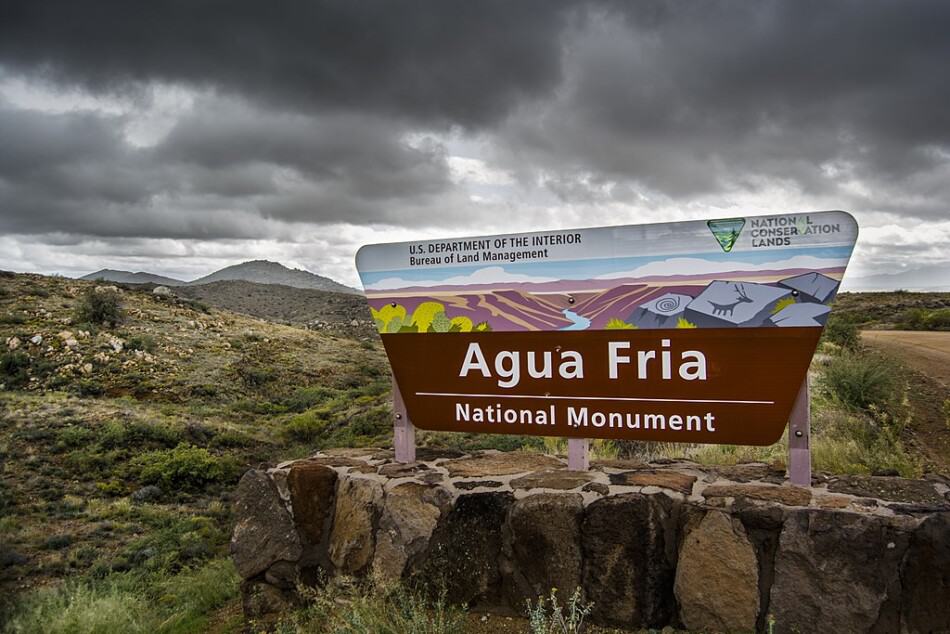
Bureau of Land Management (BLM) Arizona
The national monument also contains an array of wildlife, ancient sites and old mines. In fact, the location was named a national monument in 2000 to protect and preserve these ancient sites.
Due to the remote location, it is important to visit prepared as there are no helping facilities in the area. The roads through the monument are also unmaintained, therefore, it is also important to drive a vehicle that can handle dirt, gravel and unkept roads.
This remote location does have its benefits, however. Tourism numbers are generally low therefore, visitors are able to experience the serenity and beauty of this national monument in peace rather than crowded by other visitors.
Agua Fria National Monument is located 40-miles north of Phoenix, Arizona.
12. Casa Grande Ruins National Monument
This national monument lying between the Gila and Santa Cruz rivers contains the ruins of a four-storey building surrounded by a compound wall.
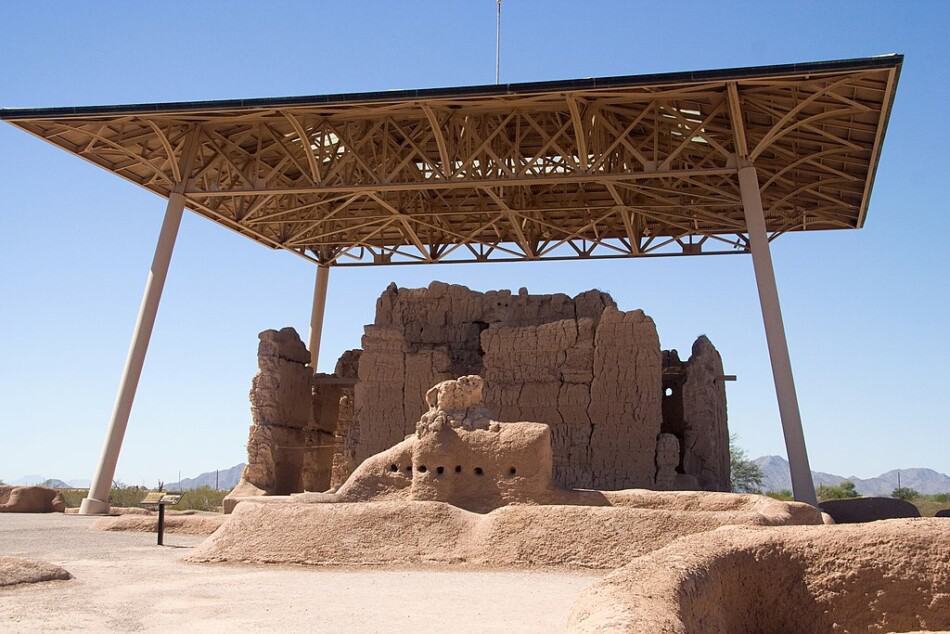
The ruins date back to the 14th century and is one of the best-preserved ancient ruin in Arizona. Due to the location and low elevation, this area is one of the hottest places not just in Arizona, but in the country.
The ancient building is protected by the desert sun by a large metal roof and four large pillars which were added in an attempt to preserve the national monument. Due to the flatness of the land, and the large size of the ruins, the building can be seen from far away.
The Casa Grande Ruins National Monument is located just 22-miles north-east of the Arizona City Casa Grande.
13. Coronado National Monument
A small area within the Coronado National Forest in extreme southern Arizona is the Coronado National Memorial.
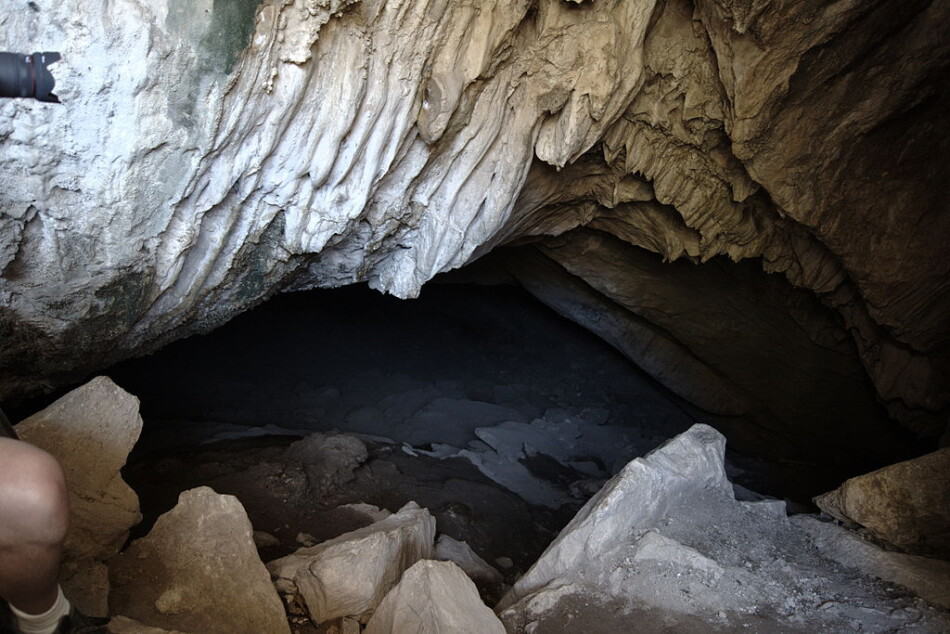
This area celebrates and acknowledges the first known exertion into the United States through Mexico by Francisco Vasquez de Coronado in 1540. Some early official statements recognise Coronado National Monument as representing the cooperation between the United States and Mexico.
Located in this area are many hiking trails that offer beautiful views over the San Pedro River as well as views down over Mexico.
This area is also home to a variety of wildlife and plant species. Due to the remote isolated location, the area typically does not receive many visitors and is often left empty of humans. The area the monument is located on is also fairly small therefore, it can all be visited and experienced in less than just one day.
Coronado National Monument is located 21-miles south of Sierra Vista along the international border of Arizona and Mexico.
14. Hohokam Pima National Monument
Hohokam Pima National Monument was established in 1972 to protect the ancient Hohokam village “Snaketown”.
This site is believed to have been home to around 2,000 people anywhere from 300BC to 1200AD. This information was found during two separate excavations in the 1930s and 1960s. There is no longer anything visible above ground due to the many excavations of the site.
Differing from many other national monuments, the site is privately owned and are under Gila River Indian Tribal ownership. In an attempt to protect this sacred site, the community have decided to keep the site to themselves.
The Hohokam Pima National Monument is not open to the public and remains private property.
The Hohokam Pima National Monument is located at the Gila River Indian Reservation in Arizona.
15. Ironwood Forest National Monument
Ironwood Forest National Monument was established in 2000 and includes over 180,000 acres of land, 59,000 of which happen to be privately owned property. A significant amount of ironwood trees has been found in the area, hence the name of the monument.

There have also been other endangered animal and plant species found to be native within this area. Additionally, many archaeological sites have been uncovered and identified to be from between 600BC and 1400AD. These sites have been acknowledged by the monument and hence are protected under federal law.
Despite being established in 2000, there still remains to be minimal signage indicating its location. There are also minimal helping facilities in the area, leaving visitors primarily on their own while visiting the monument.
There is an impressive hiking trail located within the monument that takes visitors up into the mountains leading to beautiful scenery and a beautiful lookout.
Ironwood Forest National Monument is located 40-miles north-west of Tucson, not far from the Saguaro National Park.
16. Montezuma Castle National Monument
The Montezuma Castle could arguably be the most impressive and spectacular ancient preserved building in Arizona. The structure is built into a limestone cliff about 70-feet above ground level.
The ruins were initially believed to be from the Aztec people; however, they are now believed to be from the Sinagua Indian people.
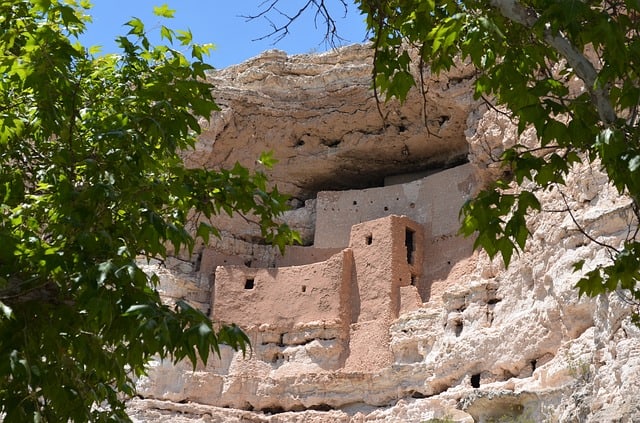
This civilization occupied the area between the 12th-14th centuries before leaving the area and this beautiful castle behind. The location of the castle, being built into the recess of this cliff provides great weather conditions for the castle to remain in good condition.
Shielded from rain and the Arizona sun as well as being established as a national monument in the early 1900s all help to ensure good preservation of this beautiful ancient national monument. Located at the national monument is a visitor center and a small museum, providing all the information visitors need when visiting the monument.
From the visitor center and museum, there is a short paved path which leads to the ancient ruins which sit around the corner that is not visible from the road or entrance. Due to the unstable conditions of the monument, visitors are not permitted to climb up to it or enter the castle, everyone must remain on flat ground and admire the castle from below.
Montezuma Castle National Monument is located 5-miles north of Camp Verde.
17. Navajo National Monument
Navajo National Monument contains three cliff-dwellings which have been very well-preserved due to the area being acknowledged as a national monument in the early 1900s.

MPSharwood
The three sites are Inscription House, Keet Steel and Betatakin. The latter is the most commonly visited of all three, due to inscription house being permanently closed to visitors because of its delicate state; and keet steel only being open to the public during the summer months.
Although, getting up close to the site is not generally allowed so visitors must only view the site from walking trails located in the area.
There are often park rangers and workers are distributed around to ensure visitors don’t get too close. Just off the visitor center is where many of the short trails begin, leading around the area and by the monuments. Located at the monument is also a small museum, picnic areas and campsites, although only open during spring and summer months.
The Navajo National Monument is located in north-east Arizona, just 17-miles west of Kayenta, Arizona.
18. Pipe Spring National Monument
Pipe Spring National Monument is arguably the least well-known of all national monuments and parks in Arizona. This largely is due to its isolated location, in-between the Grand Canyon and Vermillion Cliffs.

Despite the low tourism to the park, there is a visitor center upon arrival, where visitors are encouraged to watch a short 10-minute video that details the history of the Pipe Springs.
From the visitor’s center, a paved pathway leads visitors on a walk around the area passing by many of the attractions of the monument. There is also a small additional hiking trail which provides a beautiful elevated view down onto the monument.
Pipe Spring National Monument is located 20-miles south-west of Kanab, Arizona.
19. Sunset Crater Volcano National Monument
Sunset Crater is a cinder cone (steep mountain containing loose fragments of rocks, typically of volcanic origin).

Anita Walz
The area was made a national monument and given the name ‘Sunset Crater Volcano National Monument’ in 1930 after Hollywood film makers wanted to place explosives on the site to give the illusion of a volcano for their film. The request was denied and caused so much outcry that the area was officially named a national monument in an effort to protect the land.
There is a 1-mile trail that loops around the base of the volcano, which is largely self-guided however, travelling up-towards the summit is strictly prohibited. Excursion to the top is denied due to the damage previous hiker caused to the volcanoes when hiking to the summit was allowed during the 20th century.
Sunset Crater Volcano National Monument is located 20-miles north-east from Flagstaff, Arizona.
20. Tonto National Monument
The Tonto National Monument contains two cliff dwellings from the Salado Indians in 1300AD. The cliff-dwellings are located atop a hillside which provided great protection from the weather. The location also provides a great view down to what was the Tonto Basin and is now considered the Theodore Roosevelt Lake.
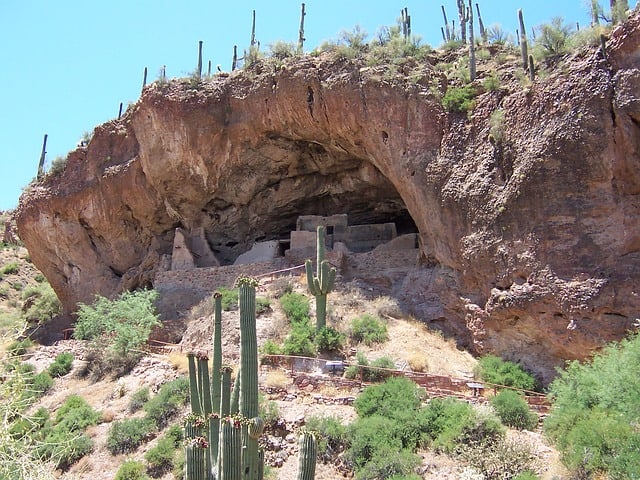
Much of the history is unknown other than knowing that the Salado people occupied this area before suddenly abandoning the area in the 15th century. One of the ruins is accessible through a .5-mile self-guided hike beginning at the visitor center. The trail leads visitors up the side of the hill providing good views of the lake and basin below as well as an up-close experience with the monuments. The very well-preserved lower ruin allows for visitors to walk through the rooms and gain a personal insight into the ancient civilization that once previously inhabited the area.
The Tonto National Monument is located 30-miles south of Payson, Arizona.
21. Tuzigoot National Monument
Tuzigoot is one of many locations that contain the preserved ancient ruins of the 12th century Sinagua Indians.

This monument contains a cluster of small buildings located atop a small sandstone ridge. The entire area of the monument is so small that a self-guided tour would take most people less than one hour to complete; thus, making it a nice easy trip if driving through or staying in the area.
Despite the low visiting rates and ability to self-guide, a visitor center is located by the entrance which provides all you need to know about the history of the ruins. There is also a loop trail beginning and ending at the visitor center, taking visitors around the ruins as well as up the summit.
Tuzigoot National Monument is located 5-miles north of Cottonwood, Arizona.
Conclusion – Arizona National Parks
As you can see from the list, there is a lot to see and do in Arizona if you want to visit the National Parks in Arizona. From the history of the Native Americans to the impressive site of the Grand Canyon to the Cacti that the state is known for there is something for everyone in the Arizona National Parks.
Sharing is Caring! Pin this article to save for later.
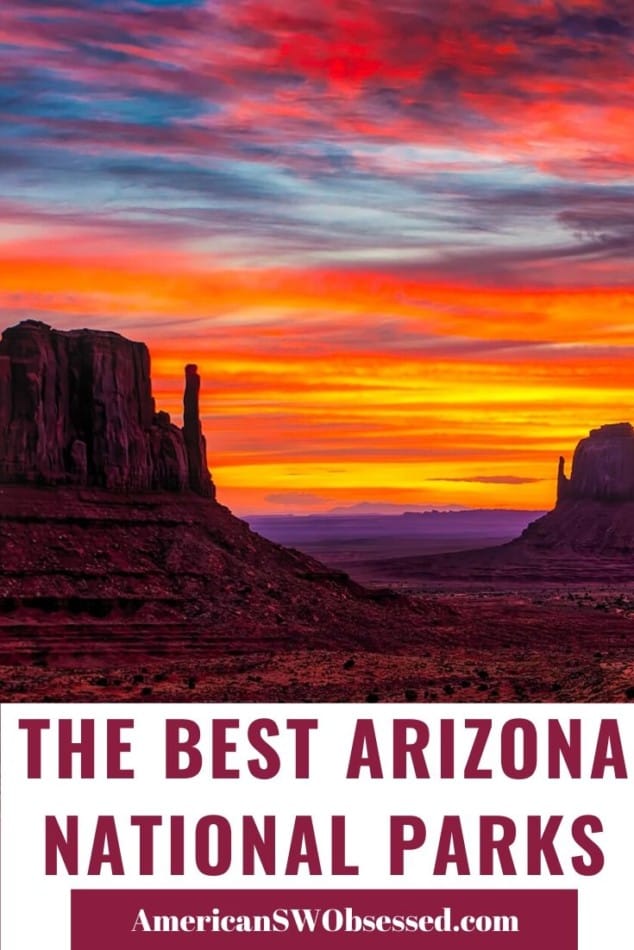
Continue Reading more on Arizona on my website:
13 Amazing Indian Ruins in Arizona
15 Things to do in Page, Arizona
These are the best Arizona National Parks and National Monuments you won’t want to miss!
Recent Posts
Discover the Top 19 Unforgettable Day Trips Just Hours from Vegas! Are you looking for day trips from Vegas? Whether you are looking to get away from the strip or are using Vegas as a base...
Vegas Fine Dining: A Tour of 15 Exquisite Upscale Dining Destinations Welcome to the ultimate guide to upscale dining in Las Vegas! Whether you're a seasoned foodie or simply seeking a taste of...
